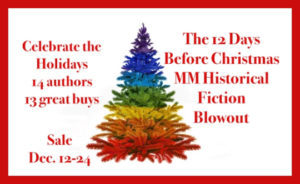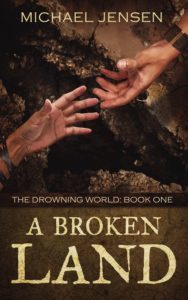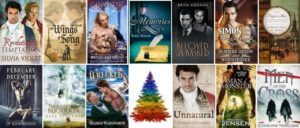Michael Jensen's Blog, page 3
June 10, 2023
Grimentz, Switzerland: The Most Charming Place on Earth?
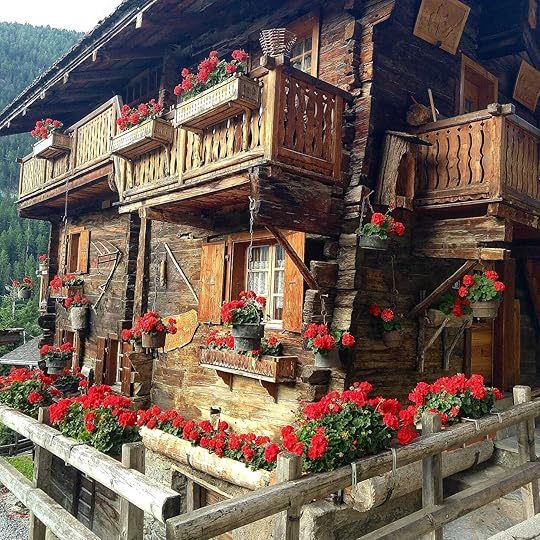 This chalet is part of Grimentz’s famous “Geranium Trail.”
This chalet is part of Grimentz’s famous “Geranium Trail.”Don’t let the small size of Grimentz, Switzerland, fool you. It has a year-round population of 500, and an old town that’s about four blocks long. But this tiny Swiss village punches way above its weight when it comes to charm.
Famous for its chalets and geraniums, the town is tucked 1500 meters up in the Pennine Alps, surrounded by 4500-meter peaks in almost every direction. First settled a thousand years ago, Grimentz has a strict building code, which is a big part of the reason why visitors feel like they’ve been propelled back in time.
In the winter, it’s a ski town (the population swells to 6000), with two different gondolas taking you in opposite directions, to two different mountain resorts.
We visited in the summer. And while the hiking and mountain-biking are extraordinary, we were most taken by the town itself — from its gorgeous chalets, geranium-filled flower-boxes, and decorative water-wheels and fountains.
Take at look!

June 9, 2023
Five Gay Historical Novels You Should Read Before You Die
Did you know Johnny Appleseed was gay?
Whuh? No way! I had no idea!
Actually, we don’t know if John Chapman, the man we know today as Johnny Appleseed, was gay or not, but in my historical fiction novels Man & Beast and the sequel Man & Monster he most definitely is.
Hold on! How can you say he was gay when there is no proof that was true?
Well, straight historians have been degaying queer historical figures since Alexander the Great conquered the known world. So why shouldn’t a gay writer turn the tables and “gay up” history a bit? Especially when the facts we do know about John Chapman definitely hint at the fact he might have been gay.
And that in a nutshell is much of the reason I write historical fiction. For far too long, LGBT folks have been erased from the historical record. In my books, I want to show that LGBT people have been part of the fabric of American society from the very beginning, not just since we started fighting for our rights at Stonewall.
And in both Man & Beast and Man & Monster, I explore what life might have been like for gay and bisexual men — settler and Native American alike — deep into the American frontier where life was incredibly difficult, but a freedom existed that was much harder to come by back east. A freedom where a man could explore his sexuality far from prying, disapproving eyes. A freedom where a pioneer could find love with another pioneer, or a sexy trapper with an American Indian.
I’m not the first writer to bring the previously hidden lives of gay and bisexual men to light, of course. What follows are five historical novels that I think do terrific jobs of showing the lives of LGBT men long before the drag queens at Stonewall ignited the modern gay rights movement.
As Meat Loves Salt by Maria McCann
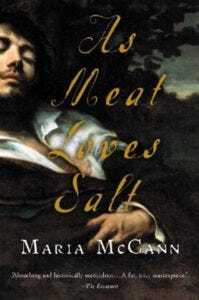
This is a brutal but deeply moving story about a man tormented by his demons during the English Civil War in the 17th century. Can love save Jacob Cullen from himself? Or will he destroy both himself and the man he loves? This isn’t an easy book to read, but McCann beautifully captures both the time and place, and what it meant to be a man who loved other men during a time when the penalty could be death.
The Alexander the Great series ( Fire From Heaven, The Persian Boy, Funeral Games ) by Mary Renault
Alexander the Great is a perfect example of historians erasing the queer side of famous historical figures. History books have no problem noting Alexander’s relationships with women. But those he had with men, including fellow warrior Hephaestion? Not so much. In this trilogy, Renault artfully tells the whole of Alexander’s life, including how loving men shaped his conquering the world.
The God in Flight by Laura Argiri
Not every gay historical novel need tell the story of an actual figure in history, of course. Seeing the world from the perspective of someone less lofty than Alexander the Great can give the reader a very different but no less enjoyable and enlightening experience. In The God in Flight a young man escapes his repressive life in West Virginia when he’s accepted to Yale in 1878. Less physically brutal than As Meat Loves Salt, this book isn’t for the emotionally faint of heart since a good gay historical novel doesn’t have to pretend life was always easy for it’s queer characters. In fact, it was sometimes downright tragic.
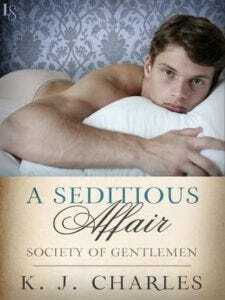
A Seditious Affair by KJ Charles
Charles has become the undisputed queen of M/M historical romances set in England. And for good reason. She brings 18th century England to vivid life as she spins tightly woven tales of men who love men. In A Seditious Affair, Charles brilliantly brings together two men from very different stations in life. One is a aristocrat, the other a working man. Even more important are their political differences — differences that could cost one of them their life. Charles gives readers a happy ending, but it’s well-earned and believable.
Widdershins by Jordan Hawk
Does a historical novel have to be a straight forward historical story to be worth reading? Nope! Case in point is Jordan Hawk’s Griffin and Whyborne series that kicks off with Widdershins. Set in 18th century New England, this is a tale of romance that takes place in a world where magic is real. Magic or no, Hawk nicely captures what life might have very well have been like in 18th century America while also weaving a tightly woven plot that not only brings our “opposites attract lovers” together, but creates an intriguing world where the readers get to join Griffin and Whyborne on their journey into the paranormal. Who says history has to be boring?
These are just a few of the many M/M historical novels out there. Others you might try include Elin Gregory’s Eleventh Hour, Charlene Newcomb’s Men of the Cross, David Leavitt’s While England Sleeps, and Harper Fox’ Brothers of the Wild North Sea just to get you started.
February 20, 2018
Review of “Throwing Stones” by Avery Cockburn
It’s a little hard for me to pin down exactly what it is that I enjoy so much about Avery Cockburn’s Glasgow Lads series. Is it the Scottish setting, so fresh and different from LA, New York, San Francisco, and all of the other usual gay suspects? Is it that while her LGBT characters are usually quite hunky (being athletes and all), Cockburn’s are complicated, complex people who seem believable? Or is it her choice of sports — soccer and now curling — about which I don’t know much, and therefore find interesting. Or is it just the plain, simple fact Cockburn is a heck of a storyteller?
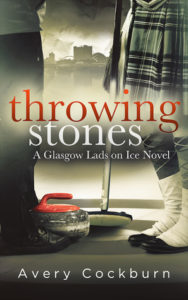 I suppose it’s all of those, but I think there is another factor that really cinches it for me: Cockburn writes stories about characters who are above all decent, kind people who are trying to do the right thing in their lives. She writes the opposite of “asshole” fiction, a genre I loathe. I’d so much finish a book and feel better about the world and the people I share the planet with.
I suppose it’s all of those, but I think there is another factor that really cinches it for me: Cockburn writes stories about characters who are above all decent, kind people who are trying to do the right thing in their lives. She writes the opposite of “asshole” fiction, a genre I loathe. I’d so much finish a book and feel better about the world and the people I share the planet with.
In Throwing Stones, a spin-off from her usual Glasgow Lads series, we meet Oliver, a former Canadian champion, now reduced to coaching because of a scandal in his past. And Luca, a young man leading his team into an important series of matches that could shape his future for years to come. I won’t spoil how the relationship between the two men develops, but even though it happens quickly, it’s entirely believable, and has you pulling for the two of them.
Don’t let the curler setting turn you off. Cockburn handles the explanations of the sport with great aplomb and gives you enough info for you to follow what’s happening, without clubbing you over the head with needless detail. And the cheeky asides about curling that open each chapter never failed to give me a chuckle.
So do yourself a favor and check out this book. Then go back and read the entire Glasgow Lads series. It will restore your faith in humanity. At least it did for me.
February 12, 2018
The Nomadic Writing Life: Part One
 After four, weeks, how has the nomadic writing life turned out? Pretty awesome!
After four, weeks, how has the nomadic writing life turned out? Pretty awesome!
When Brent and I decided to pack up everything and leave Seattle to travel the world, doing so for our writing careers wasn’t really at the top of our minds. We left because A) we were sick of the dark, the rain, and the cold B) as much as we loved the Pacific Northwest, after all of these years living there we were bored out of our skulls and C) Seattle had become so expensive, we could live in so many other places for less money without giving up anything.
The fact that we are writers was definitely an advantage in making such a big change. We can do our jobs anywhere in the world that has wireless, after all. But doing so as a way to help our writing? That wasn’t really something we thought about.
Turns out, it’s had a pretty big impact, though!
I think the biggest change is that it has completely shaken me out of the routines and ruts into which I’d fallen. In Seattle, the days had developed a sameness that, looking back, I can see were a little stultifying, both personally and creatively. I pretty much knew every day exactly who I would see – mostly just Brent – and what I would do – get up, check the news, listen to NPR for an hour, write, go to the gym, write some more, make dinner, watch some TV, then go to bed.
Wash, rinse, repeat. Yawn. Not exactly thinking, or living, outside of the box.
Here in Miami where I’m staying at Roam, a co-living facility for digital nomads, my days are pretty darned different. I still exercise, but now it’s either with a group of people in an informal class, head over to the local pool to swim under a blue Florida sky, or go for sunrise run on the beach.
Where I used to write only at my desk, I now have a half dozen different places to choose from – outside by the pool, on the porch of one of the houses, or in the co-working space where I’m currently writing this alongside a New York filmmaker, a Dutch graphic designer, a French writer, and a German day-trader. As Anne Shirley, one of my favorite literary heroines would say, I have so much more scope for my imagination now.
While I still follow the news of the day, I’m consuming a lot less political coverage, and that has made me a much happier man. Even better, I no longer listen to NPR, which had become a huge source of frustration. Freeing up those hours has given me a lot more time to think about my work, plus added a lot of writing time to my day.
 And as a result, I’m finding my writing is flourishing. I’m starting earlier, working more efficiently, and find I’m more excited about what I’m writing.
And as a result, I’m finding my writing is flourishing. I’m starting earlier, working more efficiently, and find I’m more excited about what I’m writing.
Why such a dramatic change?
It’s hard to say for sure, but I suspect a big part of it is simply my new surroundings and routines. Here in Miami, I often write alongside other folks doing a myriad of different jobs. Doing so reminds me of doing laps in the pool. When I’m swimming by myself, I don’t push myself as hard. When someone swims in the lane next to me, I find that I push myself harder!
So while I didn’t leave Seattle to improve my writing, it turns out that’s exactly what’s happened!
February 1, 2018
“Battle of the Sexes” Might Not Be Perfect, But It’s Worth Watching
I watched the biopic Battle of the Sexes last night, and while it wasn’t a perfect movie, it was interesting and definitely worthwhile. The story of how a tennis match between 29-year old Billie Jean King and 55-year old Bobby Riggs become the focal point of women’s liberation is fascinating in and of itself.
 As famous as she is, I feel like King has never really gotten the full credit she does for being a pioneer. She put everything on the line for women’s equality, and while she got outed as a lesbian and and apologized for her “fling,” she later became a terrific LGBT activist.
As famous as she is, I feel like King has never really gotten the full credit she does for being a pioneer. She put everything on the line for women’s equality, and while she got outed as a lesbian and and apologized for her “fling,” she later became a terrific LGBT activist.
As a writer of historical fiction, I’m always interested in seeing how another writer captures an era. Granted, my eras — the 18th century American frontier for Man & Beast and Man & Monster, and 5500 BC for the Drowning World series — are quite a bit earlier than BoS! Nonetheless, it’s always instructive to see how a book or movie captures another time. What details do they focus on to help the reader visualize that time and place? What do the characters wear, how do they dress and speak? Do they effectively convey how different social mores were?
That last one often depends on who is telling the story, not to mention what the story is. Movies are still usually told by men and are about men, usually famous white men. Which means the parts of history about how women and other minorities were treated (badly) often gets dropped by the wayside. As an author of historical fiction, those are details I always strive to include.
As for BoS, it’s a little by the numbers, like biopics can be. But when it comes to the sexism that women faced at the time, the condescending attitudes from men in power toward women, I have to say BoS qualifies as a grand slam. If you’re at all interested, or have no idea why you know the name Billie Jean King, you should check it out!
January 31, 2018
Reflecting on the Crash of Alaska Flight 261 and Living For Today
 Today is January 31, the anniversary of the crash of Alaska Airlines flight 261 that killed everyone on board eighteen years ago. I was still a flight attendant then and was flying that day. As it happened, not long after the crash, our plane flew directly over the site. Our captain even wondered what the oil slick on the water was from.
Today is January 31, the anniversary of the crash of Alaska Airlines flight 261 that killed everyone on board eighteen years ago. I was still a flight attendant then and was flying that day. As it happened, not long after the crash, our plane flew directly over the site. Our captain even wondered what the oil slick on the water was from. He knew it wasn’t good.
There was a short time when my friends and family had no idea whether I’d been on that flight or not. It was sobering for them and for me. In fact, my brother and I weren’t even speaking at the time, though thankfully the crash changed that.
I knew several of the flight attendants on board, including Craig Pulanco, who had brought his partner Paul along with him for the layover in Puerto Vallarta. Since I was flying at that very moment, it wasn’t hard to imagine Brent and myself being on that flight, and that it was our lives cut tragically short.
The crash is especially on my mind today because it’s a reminder none of us knows how long we have and that we need to think carefully about how we choose to spend that time.
It makes me even more grateful that I’ve spent my life trying to make it as a writer, and that earlier this month, Brent and I left Seattle to live and work in different places around the world. It was a bit of a scary decision, but far less terrifying than reaching the end of my life with a heap of regrets.
If I happen to die tomorrow, I’ll go without regretting not having tried to make my dreams happens or not trying to get everything possible out of life. You can’t ask for much more than that.
January 29, 2018
Review of Cat Sebastian’s “Ruin of a Rake”
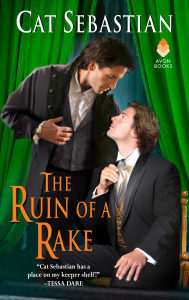
And I’m so glad I did. The story of “wealthy but still an outsider merchant” Julian and the supposedly depraved Lord Courtenay is an entertaining tale of two men who completely misunderstand each other — and more importantly themselves. How they come to better know themselves and change each other in the process is always entertaining, often very sexy, and occasionally touching.
My one fault of the book would be something fellow author Kaje Harper pointed out in her Goodreads review — sometimes the inner turmoil keeping the two men from admitting their feelings for each other didn’t quite add up.
Most of the time I attributed that to how very uptight and “proper” the English were at that time. It was better to let someone think you didn’t care about them than it was to admit to improper feelings. But I think once or twice the conflicted feelings were there more to keep our lovers apart.
But that’s a small thing. On the whole The Ruin of a Rake (great title) is a fun, entertaining read, and while the final destination isn’t exactly a surprise, the trip is well worth taking!
January 20, 2018
Review of KJ Charles’ Wanted, a Gentleman
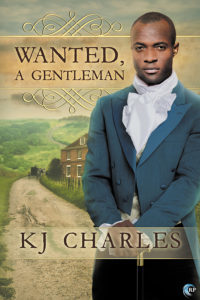
In Wanted, A Gentleman we are introduced to Theo, a down on his luck “scribbler” who plays matchmaker for desperate singles via his London matchmaking tabloid. It’s a sad business for a sad man.
Martin, a freed black man, carries a sadness of a different kind. He’s no longer a slave and even feels gratitude toward the family that once owned him, but freed him. Wrapped up in that gratitude is a bitterness that colors all else for Martin.
How Charles brings the two men together, tears them apart, then gets them back together (come on, you knew that was coming) is a satisfying tale driven by two very complex men in difficult situations.
There were two things in particular I admired most about WAG. The first is that both of these characters were unlike any others I’d read before. Martin’s story of being captured and sold into slavery at age four, how he eventually gained his freedom, and how he still felt shackled nonetheless was utterly fresh and new. And while Theo’s sad tale of woe wasn’t quite as fresh, his alias as scribbler Dorothea Swann was a a world I’d never read about it.
The second aspect I admired was how Charles handled the issue of Martin’s past as a slave. I’m glad the story wasn’t about his being a slave and the horrors of slavery. Instead, it showed us a freed black man was able to become successful as England slowly evolved. Nor did Charles shy away from the damage inflicted by slavery, even on someone like Martin who escaped the worst of it. I found it a fresh way to deal with the entire topic.
At 155 pages, the book is a little short, but all that really means is that Charles doesn’t waste a single word. All in all, Wanted, a Gentleman is a highly recommended read!
January 18, 2018
Ch-ch-changes! Moving to Miami Edition!
I’m at day three of settling into my new temporary home in South Florida where Brent and I will be living for the next four or five months. And so far it’s gone surprisingly well (some noise issues aside).
Did you know it’s 2,720 miles by air from Seattle to Miami? That makes them the two major U.S. cities the farthest from each other. And with such a huge distance comes a lot of changes. For instance, it’s sunny here in Miami. Really sunny! And it doesn’t rain all winter! Coming from cold, dreary, wet Seattle, I can’t overstate how amazeballs that is. Plus, Spanish is heard here more often than English, which is why I’m glad I’ve started to learn that language. Also, there are alligators. Lots of them. Basically, they are the pigeons of Florida.
How have these changes affected my life so far? My reasons for leaving weren’t running away from anything. Rather it was running toward something. While I love Seattle, I’d grown pretty darn bored with it. It was time for something new. New weather. New experiences. New things to see and do.
Apart from keeping an eye out for lurking alligators, the changes have been really positive. I’ve started doing a fitness class taught by one of the other residents at the co-living group where we’re staying in Miami. This makes a nice change to my old workout routine back home. Turns out there are some muscle groups I hadn’t been using.
I also find I’m more conscious about what I’m eating and actually eating less, which is good since eating is something I do to relieve stress. (And, man, was 2017 stressful! Like I have to tell you that.) I’m also less obsessed with politics, and that is awesome as some days it had taken over my life. And rather than Brent and I usually only seeing and talking to each other most days, now we’re meeting tons of new people. So far I’ve chatted with folks from Germany, the Netherlands, Italy, Switzerland, and Australia, plus Americans from all over the country. Most of them are pretty cool, too.
Best of all, it’s allowed me to shake up my writing routine, which fits in perfectly with how 2018 is shaping up. Not only do I have a new agent – the awesome Saritza Hernandez – but I’m bringing a new focus and discipline to my work. And it turns out having a new location allows me to focus more diligently on my polishing up A Broken Land for submission to editors (woo hoo!), coming up with ideas for a new series, and doing even more on social media.
I’m sure some of this would have happened had Brent and I stayed back in Seattle, but certainly not all of it. And it definitely wouldn’t have had the same air of excitement that upending our life has created. I knew we’d fallen into a rut back home, but it turns out that was a really deep rut — like Grand Canyon-sized — and it’s great to have pulled ourselves out of it.
I don’t think running away from your problems is a way to live life, and thankfully this move wasn’t about that. But it was about getting a fresh perspective on the world. And so far it’s worked in spades!
November 27, 2017
The 12 Days Before Christmas MM Historical Fiction Blowout!
Get swept away to times long past.
Fourteen authors share their love of history through fiction.
Follow the website links after my post to read the authors’ articles
about their books and then go pick up a great read
for half-price or less from December 12 – 24!
~ ~ ~ ~ ~ ~ ~ ~ ~ ~ ~ ~ ~
The Pacific Northwest. A remote Scottish island. England when the first stones for Stonehenge were raised up. These are the types of the places that have always fueled my imagination and wanderlust.
That desire to travel to the most remote of places is also what has inspired my choices when choosing what locales I have written about in my historical novels. Both Man and Beast and Man and Monster are set on the western American frontier of the late 1700s when white settlers first started to encroach on those lands. For those settlers, the towering forests were utterly alien and untouched. They had little idea of who or what lived within their shadows. Rumors of strange creatures like the mythical wendigo abounded.
For my characters John Chapman and Palmer Baxter, the mysterious frontier provided a place where they could explore their equally mysterious desires; desires that were forbidden to them back home.
And my new series The Drowning World (coming out in 2018) is not only set in remote locations around the Black Sea, it also takes place in the very distant past: 5500 BC, at the dawn of civilization. You can go to too many places more remote than that!
Why do I find these places so fascinating? Part of it is their mysteriousness and the fact that we can never truly know what they were like. I suspect going back in time even fifty years would throw most of us for a loop. So experiencing the Civil War or wandering Italy during the Renaissance would truly be mind-blowing. And the farther back in time we go, the stranger everything would become.
Imagine traveling between the empty expanses between ancient Bronze Age villages, encountering people and animals and plants you’d never heard of before. How cool would that be?
It’s fantastic that in 2017 Google Earth can show us almost anywhere on the planet with a click of a mouse. But I fear with that amazing advance we’ve lost a sense of wonder about the world. A little mystery can keep life very interesting.
So if you’d like to slip back to Ancient Rome or to see what it might be like to have been gay on the American frontier, click on any of the the links below, and you’ll be whisked away to a different time and place!
~ ~ ~ ~ ~ ~ ~ ~ ~ ~ ~ ~ ~
Visit all the authors participating in this MM Historical Fiction Blowout.
(NOTE: Sales prices & website links may not be active until Dec. 12) Discover a new author. Find a new book to read. Click on the “website” links to read the authors’ posts.
Alex Beecroft
The Reluctant Berserker
Era: Early Medieval/Dark Ages Saxon
Amazon All Other Formats $0.99
Website | Amazon author page | Facebook | Twitter
JP Kenwood
February and December (Dominus Calendar Series 1)
Era: Imperial Rome
Amazon Worldwide $0.99/.99p
Website | Facebook | Twitter | Archive of our Own
Brita Addams
Beloved Unmasked
Era: Early 20th Century New Orleans
Dreamspinner | Amazon $3.00
Website | Newsletter | Facebook | Twitter
Summer Devon & Bonnie Dee
Simon and the Christmas Spirit (Victorian Holiday Hearts series)
Era: Victorian
Amazon | Smashwords | Kobo | B&N | iTunes $0.99
Website | BD Facebook | BDTwitter | SD Facebook | SD Twitter
Anne Barwell
On Wings of Song
Era: WWI – 1920
Dreamspinner $2.50
Website | Twitter | Queeromance Ink | Newsletter |Facebook
Joanna Chambers
Unnatural
Era: Regency
Amazon Amazon (UK) Nook iBooks Kobo GPlay $1.99
Website | Facebook | Twitter | Goodreads
Wendy Rathbone
Ganymede: Abducted by the Gods
Era: Bronze Age, fantasy, alternate myth Amazon $2.99
Website | Facebook | Newsletter (get a free copy of “Letters to an Android”)
Christina E. Pilz
Fagin’s Boy: The Further Particulars of a Parish Boy’s Progress
Era: Victorian
Amazon | Kobo | Apple | Smashwords|B&N $0.99
Website | Twitter | Tumblr | Pinterest | Facebook
Silvia Violet
Revolutionary Temptation
Era: American Revolution
Amazon Global | iBooks | Kobo | BN $2.99
Website | Facebook | Twitter | Pinterest | Instagram
Deanna Wadsworth
Wrecked
Era: pre-Civil War Key West, Florida
Dreamspinner .89c Dec.19 only
Amazon | Google | Google Play | Nook | Kobo | iTunes $2.99
Website | Twitter | Pinterest | Goodreads|Facebook
Michael Jensen
Man & Monster
Era: 1799, America
Amazon $1.99
Website | Twitter | Instagram | Facebook
Charlene Newcomb
Men of the Cross (Battle Scars I)
Era: Medieval – 12th century
Amazon $0.99/99p
Website | Twitter | Facebook
Ruby Moone
Memories
Era: Regency
Amazon | JMS Books
Website | Twitter | Facebook



